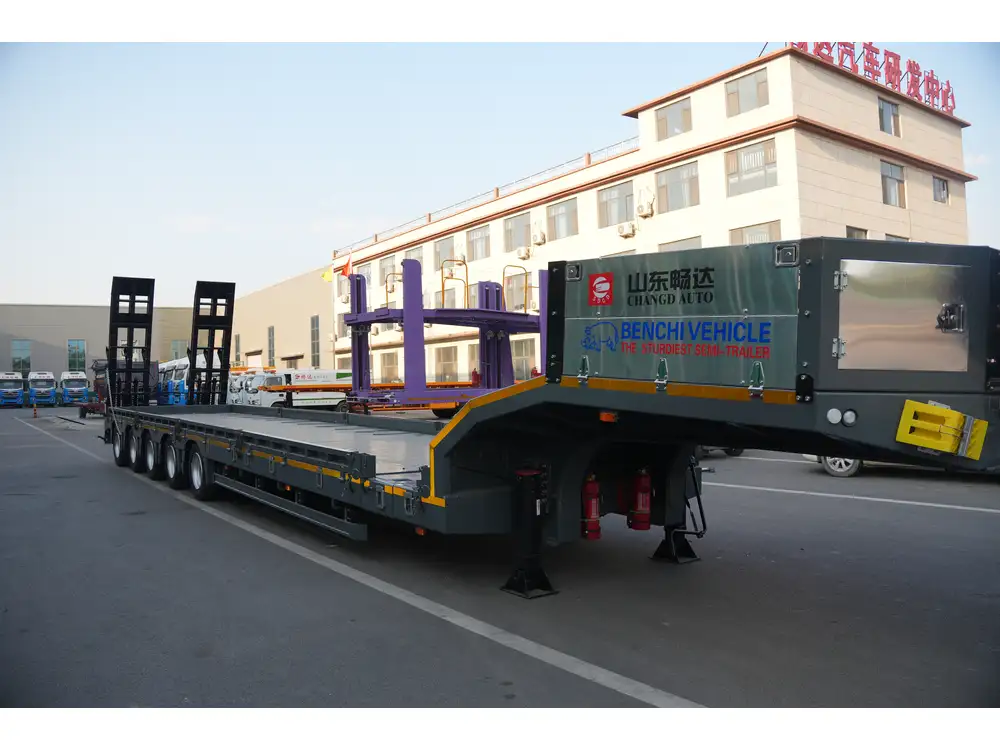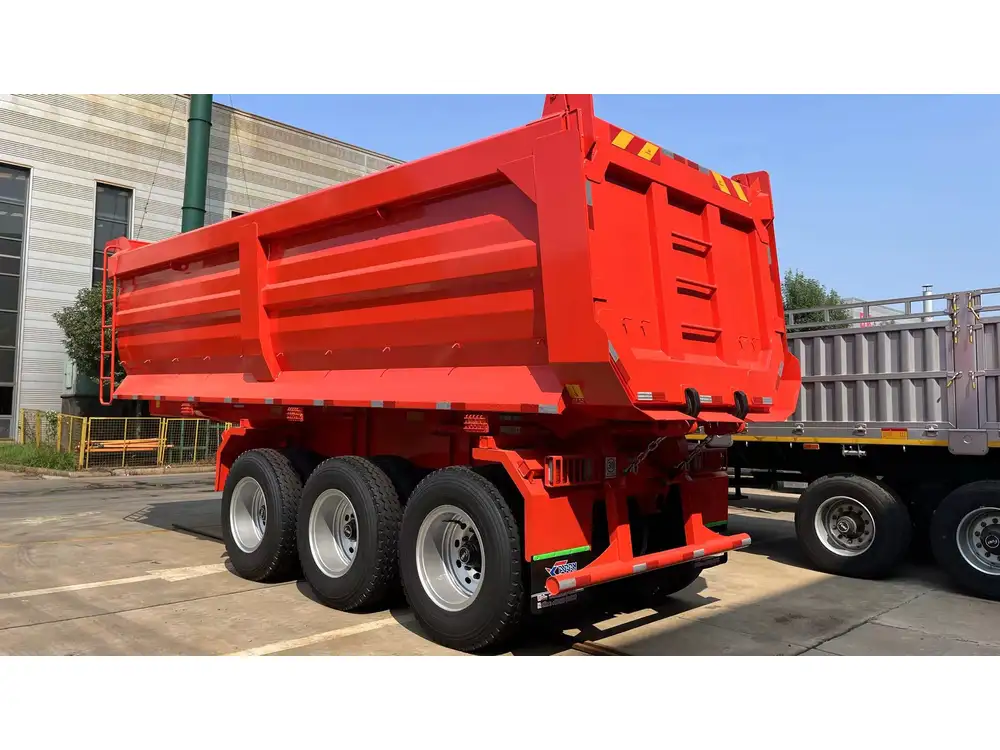In the world of logistics, transportation, and freight management, understanding the capacity of semi-trailers is crucial for effective planning and operations. One of the most common inquiries among operators, logistics managers, and those in the heavy equipment industry revolves around the fuel tank sizes of semi-trailer trucks. Specifically, “How many gallons does a semi hold?” is a question that often surfaces and holds significant relevance to those involved in long-haul transportation. This article delves into the complexities of semi-trailer fuel capacity, examining various factors that influence these capacities, comparing them across different truck models, and also discussing implications for fuel efficiency and operational costs.
Exploring Fuel Tank Capacities of Semi-Trailers
The fuel tank capacity of a semi-trailer varies significantly based on the type of truck and its intended use. Here is a detailed breakdown of key aspects that define the fuel capacity of semi-trailers.
Average Fuel Tank Capacity
On average, diesel semi-trucks hold between 100 to 300 gallons of fuel. This broad range can be influenced by several factors, including:
- Truck Model: Different manufacturers offer various sizes, leading to significant capacity differences.
- Configuration: Trucks configured for long-haul services typically feature larger fuel tanks than those designed for local deliveries.
- Regulatory Requirements: Some jurisdictions impose restrictions that can affect tank sizes.
| Truck Model | Average Fuel Tank Capacity (Gallons) |
|---|---|
| Freightliner Cascadia | 120 – 150 |
| Peterbilt 579 | 100 – 200 |
| Kenworth T680 | 150 – 300 |
| Volvo VNL | 200 – 300 |
| International LT | 100 – 150 |
Note: The above figures are averages and may vary depending on specific configurations.

Factors Impacting Fuel Tank Size
Several crucial factors affect the fuel tank sizes of semi-trailers:
- Purpose of Use: Long-haul trucks are designed for extended distances, necessitating larger fuel tank capacities to reduce the frequency of refueling stops. Conversely, local delivery vehicles may have smaller tanks.
- Weight Regulations: In jurisdictions where weight is restricted, manufacturers may reduce fuel tank sizes to maintain compliance while maximizing payload capacity.
- Load Management: Some operators choose to carry extra fuel in auxiliary tanks to manage heavy loads more effectively.
The Role of Fuel Efficiency
Importance of Fuel Efficiency in Logistics
Fuel efficiency is becoming increasingly important in the trucking industry due to rising fuel costs and regulatory pressures. The relationship between tank capacity and fuel efficiency can significantly impact operational profitability.
- Longer Hauls: Trucks with larger tanks can travel further without stopping. This is especially valuable in remote areas with limited refueling options.
- Reduced Downtime: Fewer stops for refueling decrease overall delivery times and increase up-time for the vehicle.

Calculating Fuel Efficiency
Understanding the fuel efficiency of a semi-trailer involves calculating the miles per gallon (MPG) that a truck can achieve. This metric is critical when assessing fueling budget needs.
| Truck Model | Average MPG | Range with Full Tank (Assuming 150-gallon Tank) |
|---|---|---|
| Freightliner Cascadia | 6-8 MPG | 900 – 1200 miles |
| Peterbilt 579 | 5-7 MPG | 750 – 1050 miles |
| Kenworth T680 | 6-8 MPG | 900 – 1200 miles |
| Volvo VNL | 5-7 MPG | 750 – 1050 miles |
| International LT | 6-8 MPG | 900 – 1200 miles |
Cost Implications of Fuel Consumption
Fuel accounts for a substantial portion of operating costs in trucking. Here’s a comparative analysis of how tank capacity relates to operational costs:
- Fuel Pricing: Understanding regional fuel prices allows customers to strategize refueling stops. For instance, filling up in states where fuel is cheaper can reduce overall transport costs.
- Fuel Tracking: Advanced telematics can help in monitoring fuel consumption and driving patterns, providing operators with insights into how to enhance fuel efficiency.
Comparing Fuel Capacities of Different Truck Types

Conventional vs. Day Cabs
Conventional trucks typically feature larger fuel tanks compared to day cabs due to their long-haul nature:
| Truck Type | Average Capacity (Gallons) | Usage Scenario |
|---|---|---|
| Conventional | 150 – 300 | Long-haul transportation |
| Day Cab | 50 – 100 | Local deliveries or short hauls |
Specialty Trucks and Their Designations
For specialized transportation—like tankers or refrigerated vehicles—the design considerations can alter tank capacities significantly. A tanker truck, for instance, primarily focuses on liquid transportation and may seem deceptively spacious when compared by dimensions, but their standard fuel storage can range between 200 to 300 gallons.
Considerations for Semi-Trailer Buyers

Assessing Your Needs
Before purchasing a semi-trailer, operators should consider several fundamental factors:
- Lifecycle Costs: Analyzing total cost of ownership including maintenance, fuel costs, and resale value.
- Operational Requirements: Determining the type of cargo transported and average haul length helps in selecting appropriate fuel tank capacity.
- Environmental Impact: Choosing fuel-efficient models can also align operations with sustainability goals, potentially appealing to eco-conscious clients.
Features to Look For
Investing in a semi-trailer should involve a careful evaluation of various features:
- Adjustable Fuel Tanks: Some manufacturers offer adjustable tank sizes to cater to specific operational needs.
- Tank Material: Stainless steel tanks, for example, may provide enhanced durability compared to standard aluminum options.
- Fuel Management Systems: Integrating advanced technologies for tracking and optimizing fuel usage can lead to substantial long-term savings.
Conclusion
Understanding how many gallons a semi holds is not merely about numbers, but it reflects a deeper comprehension of logistics, operational efficiency, and economic implications in the transportation sector. Operators must balance between fuel tank size, efficiency, and costs to optimize their fleets. The landscape of semi-trailer design and utility is dynamic, and staying ahead of these trends allows businesses to remain competitive in an ever-evolving market.
In preparation for strategic investments in semi-trailers, we encourage a comprehensive assessment of both current and future operational needs, along with due diligence in selecting models that maximize fuel efficiency and cater to individual transportation demands. Navigating the complexities of semi-trailer capacities and fuel economy ultimately leads to informed decisions that drive profitability and sustainability in the logistics arena.



